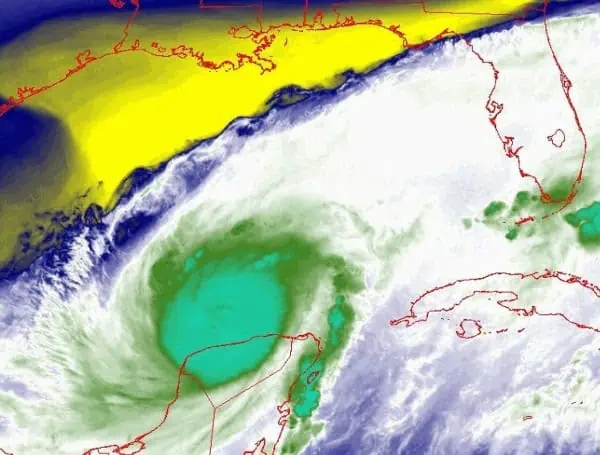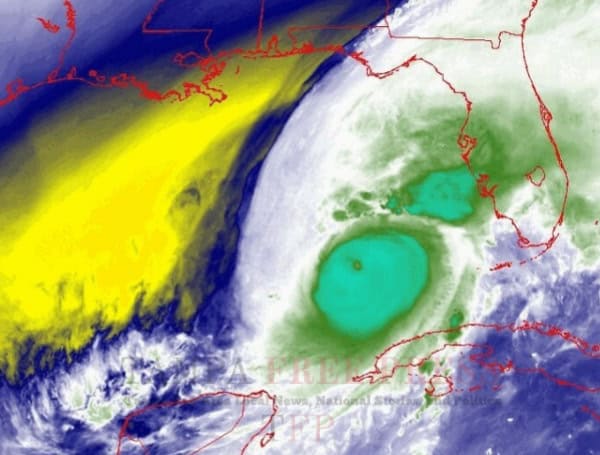The National Oceanic and Atmospheric Administration (NOAA) today issued a significant forecast for the 2025 Atlantic hurricane season. The forecast predicts a 60% chance of above-normal activity, which directly impacts Florida residents’ need to begin early preparations.
The announcement comes just days before the official start of the hurricane season, which runs from June 1 to November 30.
NOAA forecasters anticipate a busy season with a 70% confidence in their projections of 13 to 19 total named storms (winds of 39 mph or higher). Of those, 6 to 10 are expected to strengthen into hurricanes (winds of 74 mph or higher), with 3 to 5 potentially becoming major hurricanes (Category 3, 4, or 5; with winds of 111 mph or higher). The agency also noted a 30% chance of a near-normal season and a 10% chance of a below-normal season.
READ: Florida Residents Urged To Prepare As 2025 Outlook Eyes Active Hurricane Season
“NOAA and the National Weather Service are using the most advanced weather models and cutting-edge hurricane tracking systems to provide Americans with real-time storm forecasts and warnings,” said Commerce Secretary Howard Lutnick. “With these models and forecasting tools, we have never been more prepared for hurricane season.”
This outlook aligns with earlier predictions from Colorado State University (CSU). Released on April 3rd, the CSU Tropical Cyclones, Radar, Atmospheric Modeling, and Software (TC-RAMS) Team also called for an active 2025, forecasting 17 named storms, nine hurricanes, and four major hurricanes. These figures significantly exceed the 1991-2020 average of 14.4 named storms, 7.2 hurricanes, and 3.2 major hurricanes. CSU anticipates overall hurricane activity to be about 125% of the average season, following an active 2024 season which was roughly 130% of average and included devastating impacts from Hurricanes Helene and Milton.
Key Drivers: Warm Oceans and Neutral Pacific Conditions
Both forecasting groups point to critical environmental factors supporting a potentially active season. A primary driver is the persistence of above-average sea surface temperatures in the subtropical eastern Atlantic and the Caribbean Sea. These warm waters act as fuel for hurricanes and are expected to remain through the peak of the season (August-October).
“When waters in the eastern subtropical Atlantic are much warmer than normal in the spring, it tends to force a weaker subtropical high and associated weaker winds blowing across the tropical Atlantic,” the CSU report stated, explaining a mechanism that sustains the warmth and promotes storm-conducive environments.
READ: AccuWeather Warns Of Inland Flooding, Tornado Risks For 2025 Atlantic Hurricane Season
Additionally, conditions in the Pacific Ocean are unlikely to inhibit Atlantic storm development. While currently in a weak La Niña state, the El Niño-Southern Oscillation (ENSO) is expected to transition to neutral. Crucially, NOAA pegs the probability of an El Niño developing – which typically increases storm-shredding upper-level wind shear over the Atlantic – at a low 13%. The anticipated absence of El Niño suggests more favorable upper-level wind conditions for hurricane formation and intensification.
Historical Context and Call for Preparedness
The CSU team, now in its 42nd year of issuing seasonal forecasts, noted that the 2025 season is exhibiting characteristics similar to years like 1996, 1999, 2006, 2008, 2011, and 2017. However, lead author Phil Klotzbach cautioned about the inherent uncertainty in early outlooks, stating, “Our analog seasons ranged from having slightly below-average Atlantic hurricane activity to being hyperactive… the large spread… highlights the high levels of uncertainty that typically are associated with our early April outlook.”
CSU’s report also included increased probabilities for major hurricane landfalls compared to the 1880-2020 average:
- U.S. Coastline: 51% (average 43%)
- U.S. East Coast (incl. Florida peninsula): 26% (average 21%)
- Gulf Coast (Florida panhandle to Brownsville, TX): 33% (average 27%)
- Caribbean: 56% (average 47%)
Officials from both NOAA and CSU stress that seasonal forecasts predict overall activity, not precise storm tracks, and urge vigilance. “It takes only one storm near you to make this an active season for you,” warned Michael Bell of CSU.
Acting NOAA Administrator Laura Grimm echoed this sentiment: “As we witnessed last year with significant inland flooding from hurricanes Helene and Debby, the impacts of hurricanes can reach far beyond coastal communities. NOAA is critical for the delivery of early and accurate forecasts and warnings, and provides the scientific expertise needed to save lives and property.”
Coastal and inland residents in hurricane-prone regions are strongly encouraged to review and update their preparedness plans. The CSU team will release updated forecasts on June 11, July 9, and August 6.
Please make a small donation to the Tampa Free Press to help sustain independent journalism. Your contribution enables us to continue delivering high-quality, local, and national news coverage.
Connect with us: Follow the Tampa Free Press on Facebook and Twitter for breaking news and updates.
Sign up: Subscribe to our free newsletter for a curated selection of top stories delivered straight to your inbox.


